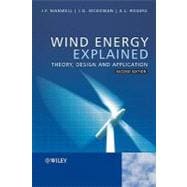Wind energy’s bestselling textbook- fully revised.
This must-have second edition includes up-to-date data, diagrams, illustrations and thorough new material on:
-the fundamentals of wind turbine aerodynamics;
-wind turbine testing and modeling;
-wind turbine design standards;
-offshore wind energy;
-special purpose applications, such as energy storage and fuel production.
Wind Energy Explained: Theory, Design and Application, 2nd Edition includes the latest data, illustrations and all new material on wind turbines, offshore wind energy, and more. Fifty new homework problems and a new appendix on data processing are just a few of the updates and expansions for this fine edition, recommended for any college-level science and natural resources collection..
This book offers a complete examination of one of the most promising sources of renewable energy and is a great introduction to this cross-disciplinary field for practicing engineers.
“provides a wealth of information and is an excellent reference book for people interested in the subject of wind energy.” (IEEE Power & Energy Magazine, November/December 2003)
“deserves a place in the library of every university and college where renewable energy is taught.” (The International Journal of Electrical Engineering Education, Vol.41, No.2 April 2004)
“a very comprehensive and well-organized treatment of the current status of wind power.” (Choice, Vol. 40, No. 4, December 2002)








